
|

|
Forum Index : Microcontroller and PC projects : Phonopaper (and questions - maybe to Volhout???)
| Author | Message | ||||
| Frank N. Furter Guru Joined: 28/05/2012 Location: GermanyPosts: 1012 |
Hi, I have found a very interesting Android application: https://warmplace.ru/soft/phonopaper/  It looks like a digital implementation of "Pattern Playback" from 1950 to me (https://120years.net/wordpress/pattern-playback-franklin-s-cooper-usa-1949/).  ( https://entokey.com/speech-perception/ ) The Android/Ios program records a sonogram, which can be printed (or displayed on the screen) and read back in with the camera and turned into sounds. The whole thing then sounds similar to turning a record by hand.  The sonogram is obviously another representation of a Fourier transform.  I have long been enthusiastic about the principles of sound recording but I have not heard of this system until now. Now for my questions: How can I generate such a sonogram (without this program, maybe with an PicoMite)? How was the sonogram actually created in 1950??? The reproduction with the tone wheel is plausible, even if the optical beam path is not completely understandable to me... My goal would be to print a spiral (similar to a vinyl record) and play it back. But the whole thing without a camera, but maybe with a CCD line? Anyway, I find the whole topic very exciting! Frank |
||||
| Volhout Guru Joined: 05/03/2018 Location: NetherlandsPosts: 5519 |
Hi Frank, In the world of "lots of processing power" this is pretty straightforward. In the MPEG compression (i.e. MP3) one of the first steps is to convert the audio signal into frequency bins. The compression happens on these bins. Afterward the bins are reconstructed to audio. If you look at the raw MP3 data over time, that could very well translate directly into this phonopaper.... How they did that in 1950. Well, that is not to difficult. Early electronics did filter tones based on "tone relays". This is like a normal mechanical relay, with adjustable contact arm. The contact arm would be tuned for a certain frequency (resonance). You would only need a single coil, with many different arms, each with their own switch contact. The arm that resonates at that particular frequency would make a contact. This is an article on a 1950's 6 channel RC system that used similar "tuned" reed relay contacts 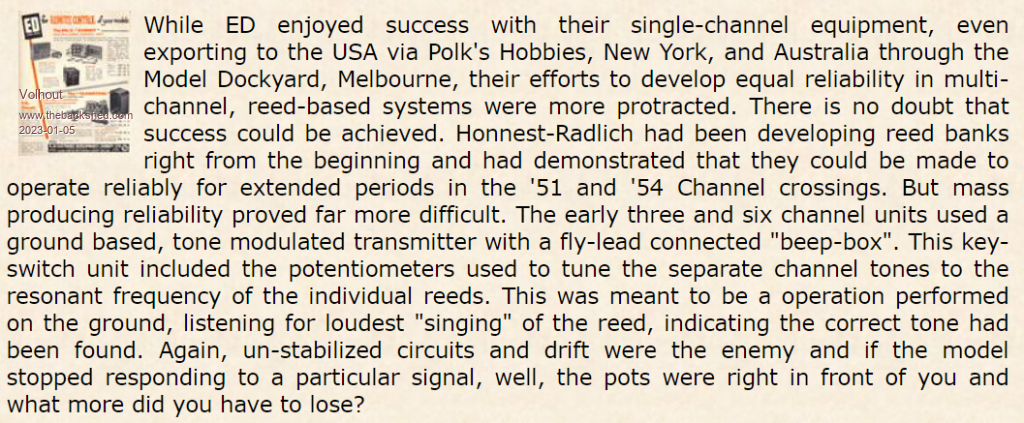 And THIS you probably have seen before.... 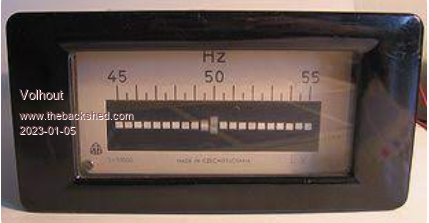 Volhout Edited 2023-01-05 22:07 by Volhout PicomiteVGA PETSCII ROBOTS |
||||
| CaptainBoing Guru Joined: 07/09/2016 Location: United KingdomPosts: 2171 |
somewhat related, I watched this the other day https://www.youtube.com/watch?v=tg--L9TKL0I |
||||
| Amnesie Guru Joined: 30/06/2020 Location: GermanyPosts: 728 |
Hello, I used Phonopaper many years ago for password backup and put the printed paper into my safe. Nowadays I use Paperback, yes right. An open source program which can take ANY file and process it to dot matrices and print them to paper (incl. redundancy Reed-Solomon) I even backuped whole programs up to 27MB on pure paper :D A Bit crazy and you need a laser printer but... yeah. Paperback: https://ollydbg.de/Paperbak/ Anyways; I would also love to see a conversion to picoMite. Maybe a really simple version or proof of concept? Greetings Daniel Edited 2023-01-06 02:33 by Amnesie |
||||
| Amnesie Guru Joined: 30/06/2020 Location: GermanyPosts: 728 |
Ahhh sorry me again! What I forgot: Maybe this helps or can be some kind of workaround or idea; there are a lot of programs which can translate images to a sound spectrogram, you can make it visible again with a nice program (free) named "Sonic Visualiser" (https://www.sonicvisualiser.org/) or any other program you'd like. So with this program you can draw or convert any image to sound spectrogram: https://www.abc.se/~re/Coagula/Coagula.html YouTube Video Demonstration: https://www.youtube.com/watch?v=6yn2NrewEZA And with Sonic Visualiser (mentioned above) you can make it visible... Some example I created: 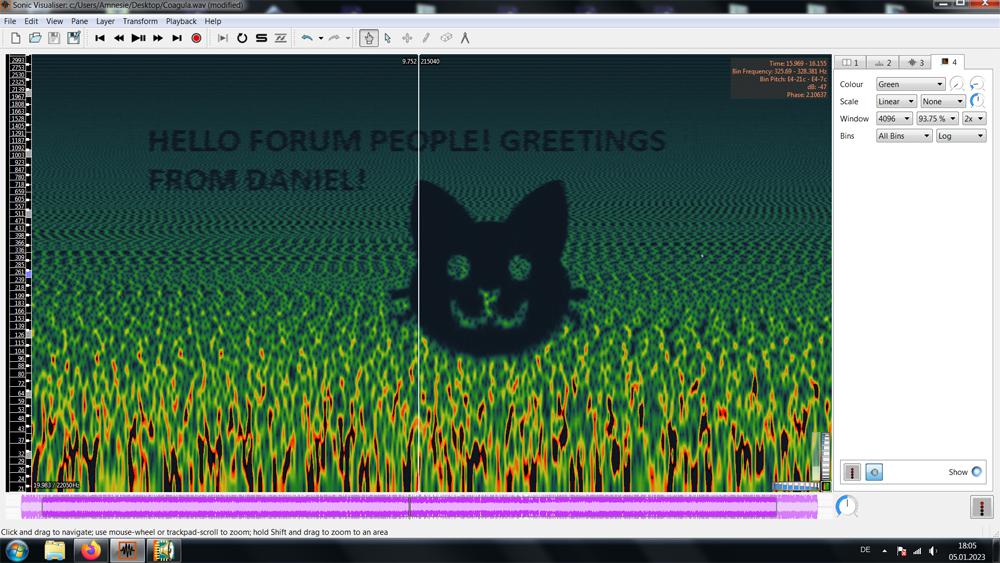 And the wav: Coagula.zip Maybe some additional ideas for this whole audio spectrum idea! :) Greetings Daniel Edited 2023-01-06 03:02 by Amnesie |
||||
TassyJim Guru Joined: 07/08/2011 Location: AustraliaPosts: 6385 |
FFT displays have been used for many years as a tuning aid for FAX RTTY and slowscan TV and looking for signals over a wide frequency range. Usually referred to as "waterfall display" The picomite can do FFT so creating the image is easily doable. 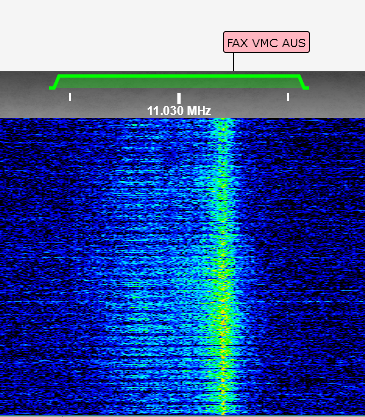 Example of a waterfall display of a HF FAX signal received this morning. (NOT using a picomite or any other 'mite) Jim VK7JH MMedit |
||||
| Frank N. Furter Guru Joined: 28/05/2012 Location: GermanyPosts: 1012 |
@Volhout: Thanks for your response! I have never heard of Ton Relay before. Do you have a link to a schematic drawing? I have also not seen your frequency display like this before. Very interesting - thank you!!! @CaptainBoing: I already knew the procedure (in German this is the Zackenschrift - unfortunately I don't know the English name for it). With this method, however, the frequencies are also already stored with it. @Amnesie: I once experimented with such a (maybe it was this) program a long time ago. You could encrypt any data, print it out, then scan it back in and transform it back. @TassyJim: This sounds very interesting!!! Would be great if you could do that with a PicoMite! My goal would be to print out sound signals in a spiral on paper like a record and then play them back with a rotating playback device. It is questionable whether a printer has the necessary resolution for this... Frank Edited 2023-01-06 06:16 by Frank N. Furter |
||||
| Volhout Guru Joined: 05/03/2018 Location: NetherlandsPosts: 5519 |
Hi Frank, 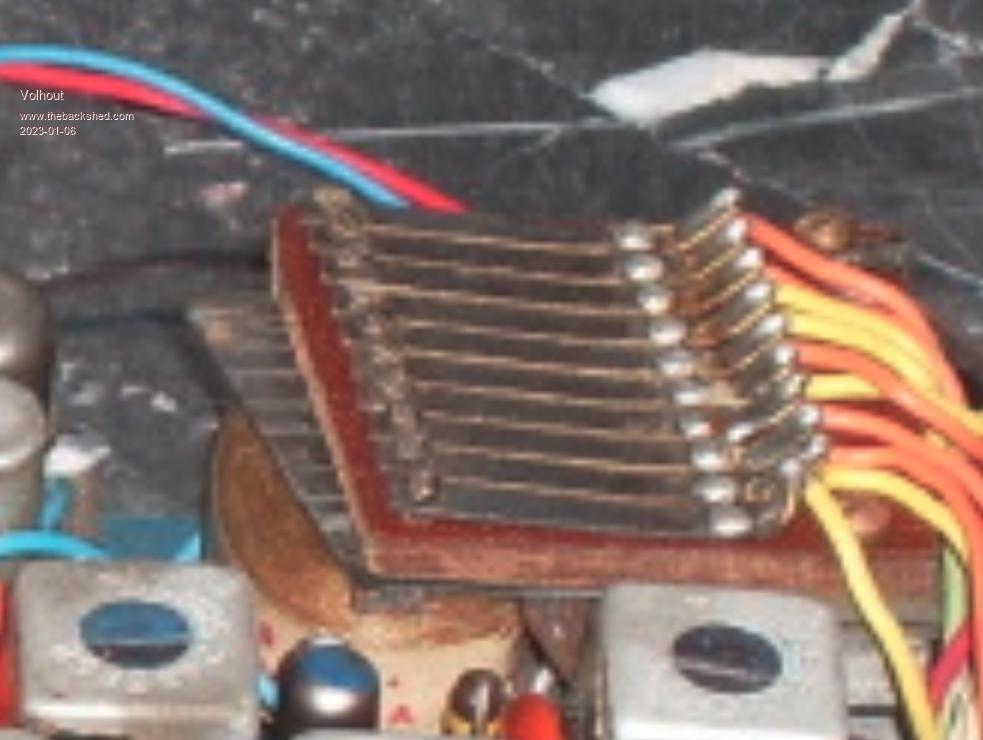 The colored wires are the outputs. Under the brown phenolic you can see the 12 tone arms (different length, for different tones). And under the tone arms there is the single relay coil (yellow cylinder). The tone arms are very similar to the ones in mechanical music box (rotating drum with pins) Volhout PicomiteVGA PETSCII ROBOTS |
||||
TassyJim Guru Joined: 07/08/2011 Location: AustraliaPosts: 6385 |
For micromite FFT, this is one thread I found: https://www.thebackshed.com/forum/ViewTopic.php?TID=10987 There are later examples for the CMM2 but I haven't tried with the picomite yet. The code syntax will have changed a bit over the years. It would be easy enough to convert the magnitude output to colour depth waterfall. Jim VK7JH MMedit |
||||
| Volhout Guru Joined: 05/03/2018 Location: NetherlandsPosts: 5519 |
If you want to use fft for dound recording and reproduction, it needs to be fast as hell. I would be amazed if the pico can do that under mmbasic. Maybe not even in C without help of a dsp core. Or you would need to write an fft that is dedicated for this. A 12bit? Or even 8 bit? Edited 2023-01-06 16:59 by Volhout PicomiteVGA PETSCII ROBOTS |
||||
| Frank N. Furter Guru Joined: 28/05/2012 Location: GermanyPosts: 1012 |
Cool!!! Thank you very, very much!!! Thanks! I will have a closer look at the link... I was afraid of that!!!  Frank |
||||
| CaptainBoing Guru Joined: 07/09/2016 Location: United KingdomPosts: 2171 |
again... tangential but possibly related... definitely entertaining https://www.youtube.com/watch?v=EuggcDJOED8 |
||||
| The Back Shed's forum code is written, and hosted, in Australia. | © JAQ Software 2025 |